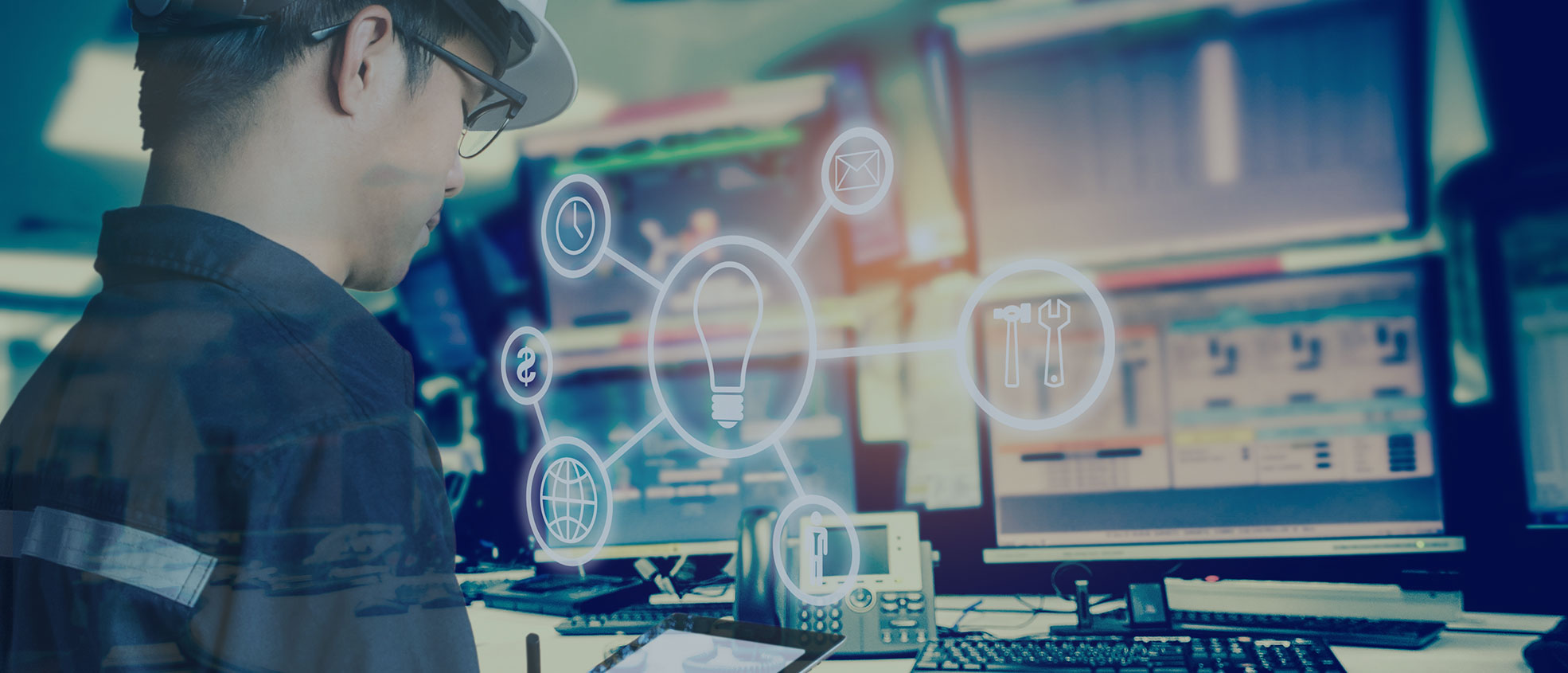- Global reach
- Reliable connectivity
- Light-weight equipment
- Seamless connectivity
- High-performance broadband
- Extensive bandwidth
- Dynamic, scalable service plans
5 Future Maritime Technologies Powered by Connectivity
The tides are shifting with the rise of technology, changing the business landscape across the industry. Advances in technology are prompting trends that emerge out of necessity to stay relevant. Companies in the maritime industry will have to adapt to these new technologies or be left behind by their competitors.
Innovations such as IoT, robotic shipping and AI will all play a critical role in the near future, emphasising stable, fast connectivity at sea. In this blog, we’ll uncover five future tech opportunities for maritime powered by connectivity.
5 Future Maritime Technologies Powered by Connectivity
Smart Shipping
According to the Global Marine Technology Report 2030, one in 10 ships will be completely automated by 2030. Today’s understanding of automation in sectors such as manufacturing will be applied to the maritime industry thanks to remote monitoring and data-driven services such as weather routing and vessel performance metrics.
The modern ‘smart ship’ will integrate a variety of connected technologies to improve operational efficiency, ship management, regulatory compliance, decision making and environmental responsibility. At the same time, these ships are also expected to improve safety and streamline vessel maintenance.
The Internet of Things (IoT)
The Internet of Things (IoT) refers to multiple connected devices sharing data with one another to provide reliable and comprehensive insight. Many ships today already incorporate some form of IoT in the manner of sensors and remote monitoring devices.
IoT devices can detect anomalies and make connections to possible causes far faster than human comprehension. When combined with external data available through stable connectivity, IoT devices can effectively make informed, strategic decisions from off and onshore sources.
Advanced Communications
Communications are important in every industry, but the maritime industry has perhaps faced some of the most daunting challenges in achieving stable, reliable communications. This is partly due to the nature of working at sea and the coverage that is traditionally available.
Advanced communications could also enable crews to monitor live audio and high definition (HD) or 3D video collected onboard. In addition, radio-frequency identification (RFID) tags will support through-life asset management, including the tracking status of cargoes, as well as structural and machinery components.
Ships that manage to achieve stable connectivity can also benefit from a wealth of onshore information. These include real-time weather reports, instant updates to navigational charts, forecasts and operational procedures. In addition, crew can benefit from remote training, recreational entertainment and on-demand medical advice.
Artificial Intelligence and Robotics
The Global Marine Technology Report 2030 reports that there will be three new types of robots that will be in use by 2030 on vessels. The first will be a learning robot that will make practical decisions based on the data it collects from various sensors around the ship. The second will be a practical robot that handles moving physical objects around the ship and the third will be a mini-bot useful for inspections in harsh or dangerous environments.
While each robot will be linked very closely to other technologies like sensors or remote controls, they will all leverage connectivity in some form to function. This can take the form of a person controlling the robot onboard or onshore, or even simply the data that is relayed to each robot to function.
Big Data and Analytics
With the vast amount of data that will be transmitted and used from vessels, the need for IT infrastructure will exponentially grow. However, installing large racks of equipment onboard will inevitably take up valuable space and resources. In addition, storing data onboard could be risky in the case of a breach or hazardous situation.
With stable connectivity, data can reliably be stored and retrieved from onshore locations. Furthermore, cognitive systems will act as data interpreters to streamline the process and offer an intuitive interface between people and machines.
The importance of connectivity
Today it is more critical than ever before to secure reliable and stable connectivity for maritime operations. Connectivity will boost dynamic routing, considering weather, currents and traffic and knowing which is the most efficient route. It will power the innovations of the maritime industry now and into the future and help maritime companies stay competitive both on the sea and off it.
Eutelsat’s solution - ADVANCE Maritime
Eutelsat’s satellite network covers every continent with a strategically placed fleet of orbiting satellites. No matter how remote the locations you visit, the distance you travel or the industry you are in, we have the connectivity solution for your needs.
Eutelsat ADVANCE Maritime offers vital connectivity with reliable high-speed communications to manage critical data and connectivity across vast coverage areas. It is specially designed to meet the connectivity needs of maritime users in the most remote areas of the world and offers packaged and wholesale solutions for service providers depending on their business model. ADVANCE is precisely the connectivity asset maritime companies need to take full advantage of the latest innovations and industry trends.
Advantages of ADVANCE Maritime
Future proof your operations
Establishing reliable and stable connectivity should be a priority for the maritime industry. As new technology develops and is widely implemented, the need for connectivity will continue to rise.
If you would like to secure the most reliable and effective connectivity for your own maritime operations, consider Eutelsat ADVANCE Maritime. Only Eutelsat can offer the speed, reliability and convenience that comes with a premier satellite connectivity provider.
Contact us today to discover the ADVANCE advantage, or visit our official ADVANCE webpage for more information.



